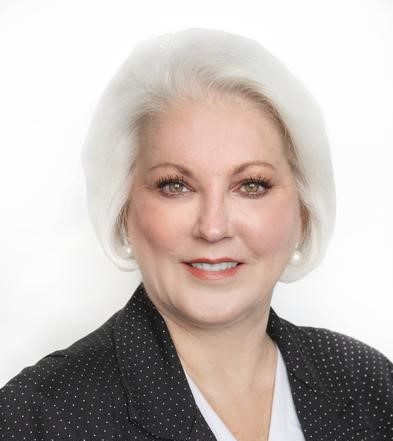How do you improve employee engagement and alignment within your practice? Do you find your command and control approach not working? Would you believe it is as simple as having a conversation leveraging four essential attributes that form a single integrated process that everyone can use? Think about it, a conversation is a frank exchange of ideas and information with an implicit or explicit agenda. Help your organization find its conversational voice by demonstrating your own as a trusted leader who listens attentively, promotes dialogues in a welcoming space, encourages employees to share accountability for the substance of their discussion and conveys the strategic principles behind executive decisions and visions. Hear how you can find ways to use conversation in managing communication within your practice.
This communication model to improve employee engagement, alignment, productivity and performance involves using leadership skills in a flatter, more networked organization that responds to a dynamic process. How do you get from Me to We? You create leaders at every level within your practice (liberate your leadership) by communicating and modeling what’s expected to your connected team, nurture a freedom culture by sharing your strategic vision for the practice so the team can own it (be involved with the decision making) while providing feedback (both positive and negative demonstrates concern for the personal growth of the individuals) and celebrating success. Collective leadership is about how individuals can collaborate to achieve greater results by working together effectively towards a common goal.
To be an inspiring, motivating leader adept at using your conversational voice, do you make an emotional connection with your team – it’s ok to be human? Besides listening to your employees at all levels, you need to learn to speak with employees directly and authentically, incorporating personal experiences that have contributed to your conviction. The challenge is to master the balance of top-down distribution of information with a bottom-up exchange of ideas. Think about minimizing the issuing of orders and maximizing the asking/answering of questions. Getting closer requires gaining trust from your employees, being an attentive listener and revealing transparency.
Don’t take trust for granted – no one will engage in an exchange of ideas if your employees feel there is a hidden agenda. Trust is an action verb that is the cornerstone and foundation of every strong relationship. And if you wish your team to be thoroughly involved in the practice, you may have to address topics that are sensitive or feel off-limits, such as financial data. How frequently do you listen? Use your conversational voice to be curious and a better listener (without interrupting or jumping the gun as to the individual’s motives – have your ‘pause’ button handy to remind yourself to reflect on what the person is saying) to hear more than one viewpoint, get insight into the issues/tradeoffs and weigh-in with the decision making. Demonstrate to your team that you focus on doing what’s right, not just being right. Ask your employees not only to raise concerns about the practice but solicit feedback on your own performance – your strengths and challenges. Ask the open ended performance review questions and be prepared for the comments, absorb the direct criticism and commit to improve. Model a ‘feedback-rich’ organization to be emulated throughout.
One person speaking all the time is not a conversation. Two or more people exchanging ideas, comments and questions with one another is a personal conversation. If your communication style is prescriptive and instructional, then your conversation is one-sided, closed and directive. But when you speak with your team instead of at your team, the interactivity is open, dynamic and fluid. You are promoting an environment in which a dialogue has vitality, a two-way direction and supports employees to speak up as well as be heard. The spontaneity of ‘give and take’ offers the benefit of the whole conversation’s information efficiently without gaps or time-lapses. Use various forums to keep in touch with your employees – openly and informally to continuously demonstrate your own self-reflection, your core values and what you truly represent.
How do you get the team to own the shared vision – motivate them to commit not just comply? They need the opportunity to act in the best interest of the practice and have a sense of control or self direction but that inclusion also involves ownership of the substance of their discussion and more importantly, accountability for its outcomes. Each team member dons a new hat, an expanded role involving brand ambassador, thought leader and story teller for the practice. If your employees are passionate about what they do (you have instilled value and meaning in their work), they externally promote the practice as brand ambassadors – a great place for clients/patients to receive quality care and a great place to work in a team environment. Empower your employees to be innovative thought leaders; a fresh pair of eyes to change a process or invent a new one by encouraging them to be curious about the latest trends in the industry and what positive impact it could have on the practice. And once implemented, have those same team members connect with clients to share the changes. Give your employees the opportunity to polish your reputation by messaging their own experiences about the service, new technology advances being provided, about being an employee, etc as a storyteller. Unfiltered thoughts may cause you some angst when employees participate in company messaging and you may set some basic expectations as guidelines.
By pursuing a shared agenda in your conversations with your team that is aligned with the practice’s strategic objectives, you keep the engaged push-pull of the discussion to reach relevant action outcomes. Your speaking with employees on the practice’s vision and logic that underlies executive decision making, gives every level of employee an overall view of where the practice vs. the competitive market stands. Depending on the business maturity and acuity of your team, you have the opportunity to include them in creating the strategy for the practice perhaps as simply by asking for ideas on trends that affect your clients and solutions that the practice might offer.
In today’s world, conversations spread well beyond the practice’s premises and for the most part, you do not control it. But if you manage the flow of information openly and honestly, employees will listen to the communication that is personal and direct as well as participating in an interactive dialogue. Clear your throat, start your practice’s conversation and create an influence plan (using the six sources of influence – personal motivation, personal ability, social motivation, social ability, structural motivation and structural ability – in combination) to motivate employees to change their communication behavior. Great reads to assist you in preparing your conversational voice – Crucial Conversations: Tools For Talking When Stakes Are High (Patterson, Grenny, McMillan, Switzler); Shut up and Say Something: Business Communication Strategies to Overcome Challenges and Influence Listeners (Friedman); As One: Individual Action, Collective Power (Quigley, Baghai) and Leadership Is A Conversation (HBR – Groysberg, Slind).









